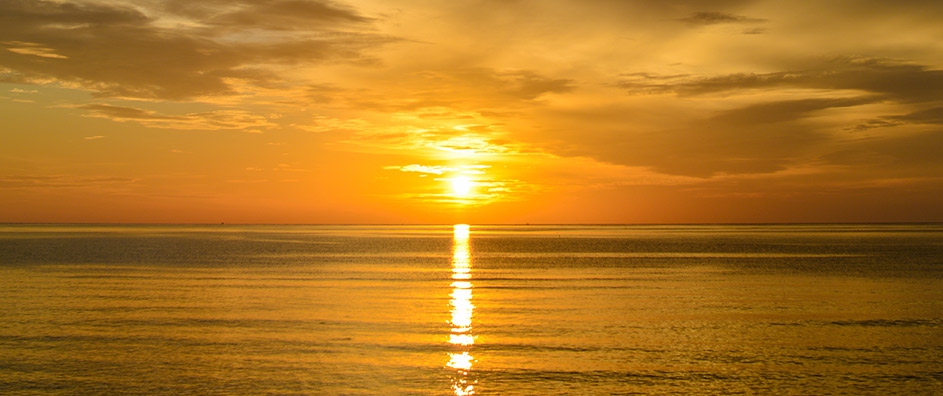The views expressed in our content reflect individual perspectives and do not represent the authoritative views of the Baha'i Faith.
This Servant hath no other intention in manifesting and proclaiming this Cause than the salvation of mankind and the extinction of the fire of enmity and hatred… When this Wronged One was a child… He used to beseech the One True God, exalted be His glory, in those days to bring about whatsoever would be the cause of love, fellowship, and unity among all the peoples of the earth—until, suddenly, before sunrise on the second day of the month of His birth, His entire condition and manner of expression and thinking were transformed in a transformation which proclaimed the joyful tidings of heavenly reunion. This experience occurred repeatedly for twelve consecutive days, after which the waves of the sea of utterance became manifest and the effulgences of the orb of assurance shone forth until it culminated in the advent of His Revelation. – Baha’u’llah, provisional translation by Nader Saiedi, Logos and Civilization, pp. 304–305.
Historians and theologians and believers have always wondered—when did the prophets of God first become aware of their missions? When did they initially begin to understand the divine message they later transmitted to the whole world?
Let’s take a look at this fascinating question in the light of Baha’u’llah’s life.

Baha’u’llah, founder of the Baha’i Faith, was a child prophet, as the above passage clearly indicates. This remarkable narrative (which I will call the “Tablet of Transformation”), is entirely autobiographical and therefore profoundly authentic. In it, Baha’u’llah recounts a vivid 12-day childhood experience that “culminated in the advent of His Revelation.”
Baha’u’llah’s own retelling of this very significant episode implicitly answers the question, “When did Baha’u’llah understand himself to be a messenger of God, with revelations direct from God, and a clear sense of mission?” This episode, so dramatically recounted in the “Tablet of Transformation,” certainly makes Baha’u’llah a “child prodigy,” in the truest sense of the word. Although he evidently knew of his destiny, Baha’u’llah kept both his prophethood and his mission to himself, more or less, until his public declaration at the age of 45 on April 22, 1863, in Baghdad.
Without a doubt, the opening episode recounted in the Tablet of Transformation takes place during Baha’u’llah’s childhood. However, various historians [noted in brackets below] interpret Baha’u’llah’s reference to “the advent of His Revelation” as occurring during one of three possible timeframes:
- Before 1832, as a child or youth, prior to reaching the age of 15. [Nader Saeidi]
- From October 16, 1852 to October 27, 1852, when Baha’u’llah was imprisoned in the Siyah-Chal (“Black Pit”) in Tehran. [Moojan Momen]
- From June 30 to July 11, 1862. [Juan Cole]
Readings of the relevant passage in the Tablet of Transformation differ over whether the powerful experience that revolutionized Baha’u’llah’s consciousness took place while he was still a youth, or at a much later date. But what difference does determining the time period of the “Tablet of Transformation” make? What’s really at stake here? The answer will help determine how historians may understand Baha’u’llah’s consciousness.
Space does not permit an explanation of each of these theories. Suffice it to say that one word in the foregoing translation, “until,” indicates a time-shift of uncertain duration. However, the word translated as “suddenly” suggests a very short period of time, rather than a period of decades later.
The most literal reading of the Tablet of Transformation indicates that the 12-day period—in which Baha’u’llah experienced “a transformation which… occurred repeatedly for twelve consecutive days”—took place when Baha’u’llah was still young.
This reading appears to be corroborated by the following passage in another Tablet by Baha’u’llah, which contains a brief autobiographical statement (set in italics):
O contending peoples and kindreds of the earth! Set your faces towards unity, and let the radiance of its light shine upon you. Gather ye together, and for the sake of God resolve to root out whatever is the source of contention amongst you. Then will the effulgence of the world’s great Luminary envelop the whole earth, and its inhabitants become the citizens of one city, and the occupants of one and the same throne. This wronged One hath, ever since the early days of His life, cherished none other desire but this, and will continue to entertain no wish except this wish. There can be no doubt whatever that the peoples of the world, of whatever race or religion, derive their inspiration from one heavenly Source, and are the subjects of one God. – Gleanings From the Writings of Baha’u’llah, p. 217.
Based on the foregoing analysis, Professor Saiedi concludes:
From this tablet we can see that at a very early age Baha’u’llah desired to see tolerance, reconciliation, and unity among all on earth as well as an end to the law of the sword even in the path of the Cause of God. Although He practiced wisdom and gradual disclosure during the Babi dispensation, He was obviously committed to the principles of human unity from the very beginning. For an accurate picture of the origins of Baha’u’llah’s ideas on the unity and harmony of the religions, as well as His other ideas, we cannot overlook what He Himself says of His own awareness of those ideas in His childhood. – Nader Saiedi, Logos and Civilization, p. 307.
We will probably never know, with any real certainty, when Baha’u’llah’s consciousness of his destiny first occurred. But Baha’u’llah’s youthful transformative experience for twelve days mirrors itself in the 12-day “Festival of Paradise,” typically referred to as the Baha’i Festival of Ridvan—observed from sunset on April 21 to sunset on May 2 every year. This symmetry between the two twelve-day periods is probably no accident.
















Comments
Sign in or create an account
Continue with Googleor